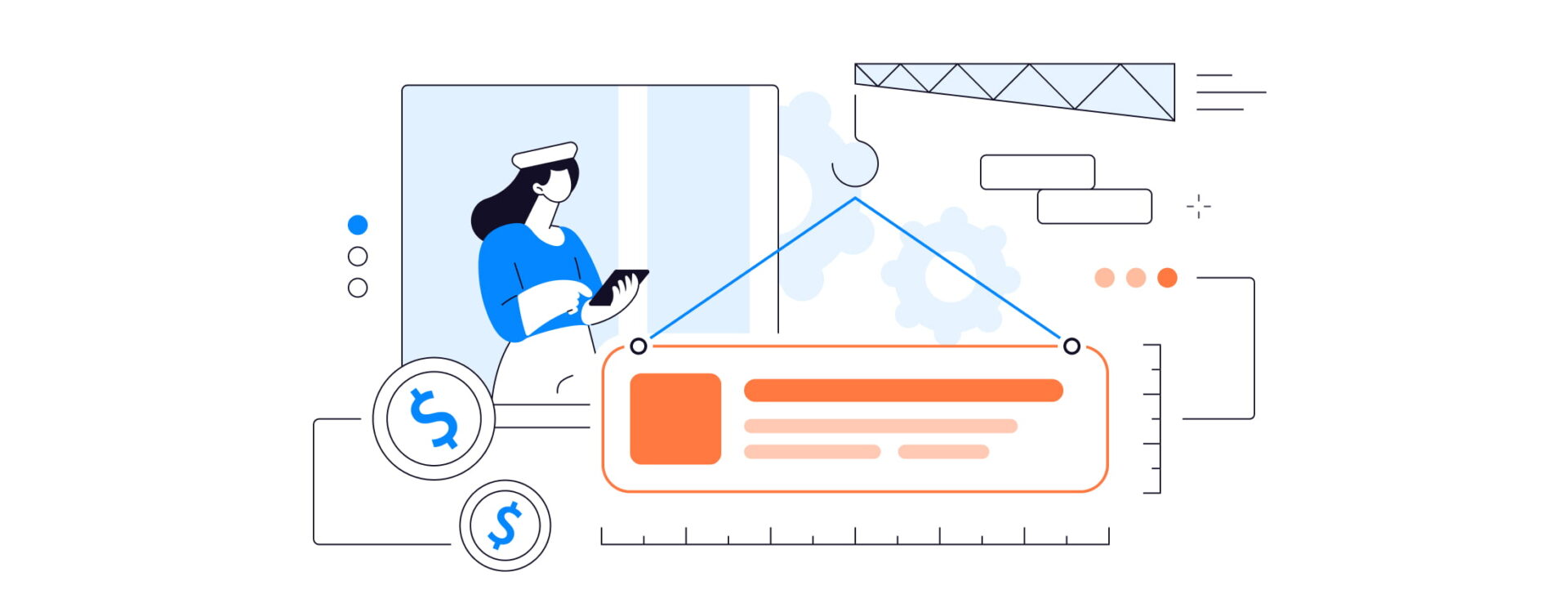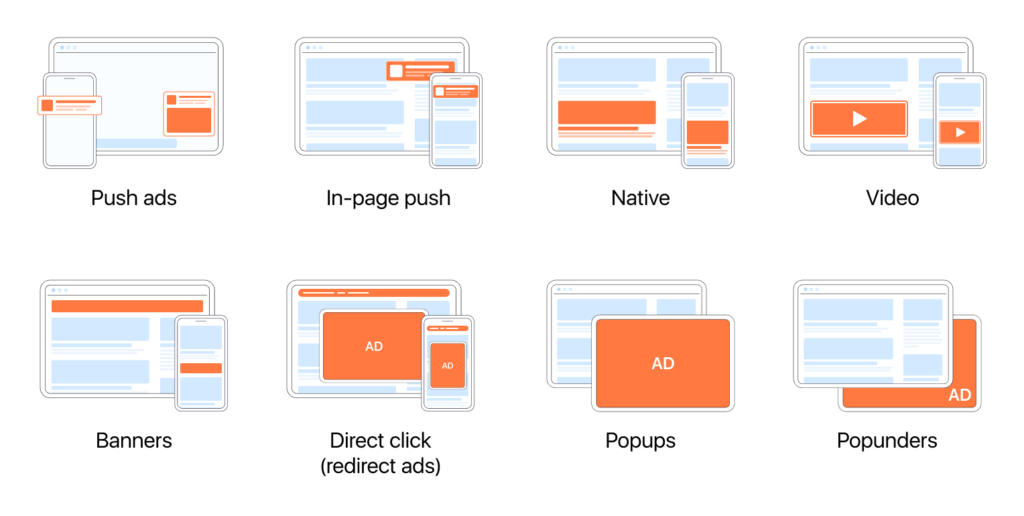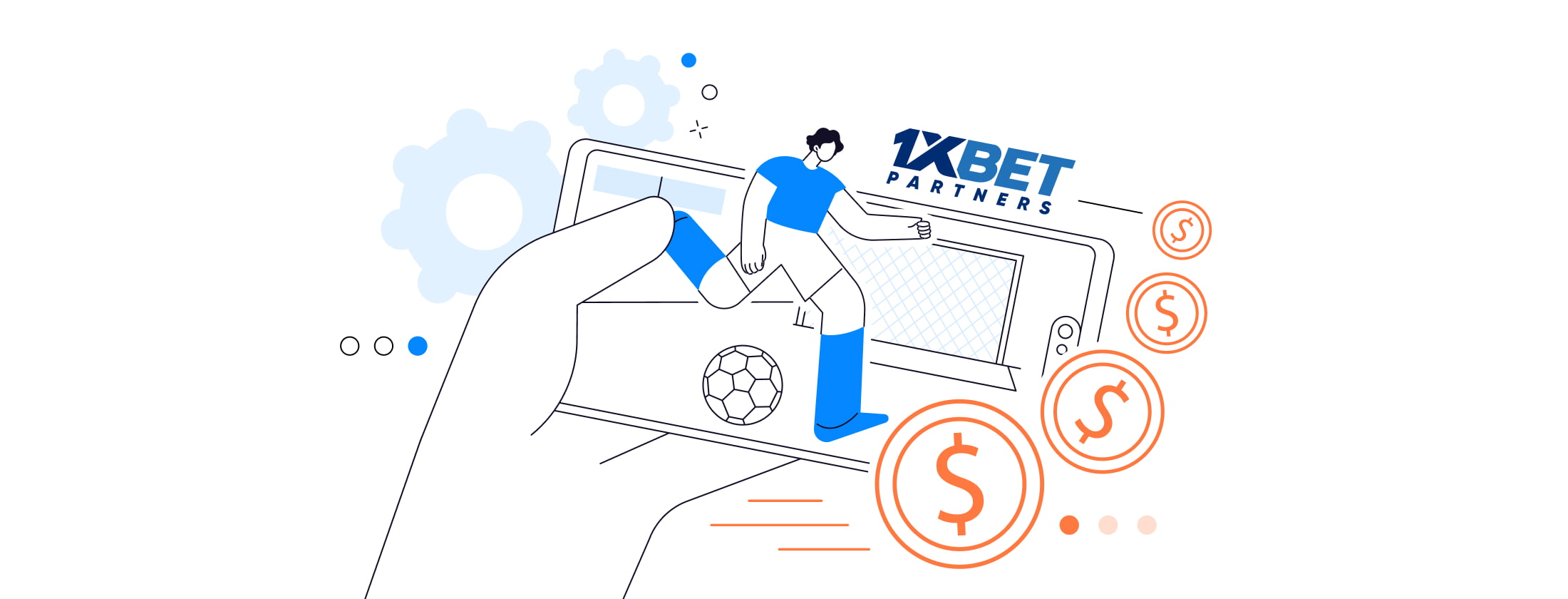Blog

Scaling a push ad campaign can bring in serious profits, but it’s not always the right move for every campaign.
Let’s dive into why and how to scale push ads effectively for maximum return.
Before you commit to scaling your push ad campaign, you need to ask yourself: is it worth it? Here are the top 3 reasons to scale push traffic:
Here are some specific tips for situations when you should avoid scaling push ads:
| Cases | Details | Tips |
|---|---|---|
| ROI is breaking even | If your revenue from payouts is roughly equal to your traffic costs, it’s an ambiguous situation. The campaign isn’t profitable yet, but it has potential. | Wait 1-2 days to see if ROI starts to improve. If there’s no growth, avoid scaling and focus on optimizing instead. |
| Campaign shows unstable conversions | If your conversion rates are fluctuating wildly, it’s a sign that the campaign needs fine-tuning. Scaling at this point could lead to high spending with minimal returns. | Test different traffic sources or creatives before scaling. Stable conversions are key to scaling successfully. |
| CTR and engagement are dropping | If you notice declining click-through rates and engagement, your audience might be experiencing ad fatigue. | Refresh your creatives or target a different audience (e.g., new geo or device) to revive performance before considering scaling. |
| Low-quality traffic | If you’re getting a lot of traffic but few conversions, it’s a clear sign of poor-quality traffic. Scaling in this case could lead to budget waste. | Analyze your traffic sources and cut out low-quality ones. Ensure you’re working with high-quality traffic before scaling. |
| Insufficient data for analysis | If you don’t have enough data to make informed decisions, scaling can be risky. | Run additional tests with smaller budgets to gather more data on your target audience, conversions, and traffic sources. Only scale when you have enough insights to optimize effectively. |
Now, let’s break down the top strategies to scale your push ad campaigns effectively.
There are several strategies to successfully scale your push ad campaigns. Let’s start by briefly outlining the basics and then dive into specific methods.
The overall principle of scaling push ads revolves around expanding your reach, testing new formats, and optimizing your campaign performance. You can achieve this by exploring additional networks, ad formats, traffic sources, and adjusting budgets in smart increments.
Here are the key strategies:
The first step in scaling is to look beyond your initial ad network. There are numerous push ad networks available, each offering its own traffic quality, audience segmentation, and pricing model. By expanding to new networks, you tap into new traffic pools that may have different engagement levels.
Discover a selection of the best ad networks to buy push traffic:
Many advertising networks sell third-party traffic within their own ad inventory. This means you don’t necessarily have to register on multiple platforms to scale your campaign. You can scale your campaign within a single push network. The traffic in such networks is typically processed by anti-fraud systems and manually reviewed for quality.
Pro tip:
A more advanced strategy for scaling within a network is the use of whitelists and blacklists. These tools allow you to refine your traffic sources with precision, ensuring you’re only spending on the most effective segments.
In addition to scaling within the push ad format, experimenting with complementary ad formats can help you target different segments of the same audience or expand to new audience pools.

Pro tip:
Integrating multiple formats – such as running a mix of push, native, and pop ads – can lead to synergies in user engagement, improving your overall conversion rates across the board. Ad networks often offer cross-promotion with push ads and banners because it helps reach users in different ways – push ads grab immediate attention, while banners keep the brand visible across websites and apps. Together, they boost engagement and maximize the chances of conversions.
The success setting up a push ad campaign largely depends on your traffic sources. By exploring other geographies, devices, or operating systems, you can significantly increase your campaign reach.
Increasing your budget can help scale a campaign, but doing it too quickly can lead to subpar results. The key is gradual scaling while keeping an eye on KPIs.
When increasing your campaign budgets, many ad networks offer different spending options like ASAP and Even to manage how your budget is distributed throughout the day. Understanding these options is crucial for controlling performance and costs.
This option focuses on spending your budget as quickly as possible. The campaign will push your ads aggressively, using up your daily budget early in the day or as soon as the traffic is available.
When to use: Use ASAP if you’re targeting time-sensitive offers, promotions, or events that require immediate visibility. This approach works well for campaigns where traffic volume peaks early, or when you want to test fast to see immediate results.
This option spreads your budget evenly over the entire day, ensuring a steady stream of ads are shown throughout. The system paces your spending to avoid exhausting the budget too soon, ensuring your ads are available for different time zones and audiences.
When to use: Even is ideal for long-term campaigns or when you’re targeting global audiences. It helps prevent overspending early in the day and ensures your ads appear consistently across various user activity times.
Key difference: ASAP is best when you need quick results, while Even is better for ensuring constant exposure throughout the day without burning through your budget too quickly.
Increase your budget in small steps, monitoring the effect on your CPC and conversion rates. This allows you to optimize while scaling and avoid overspending on traffic that doesn’t convert.
Creatives play a vital role in the success of your campaigns as you scale. Refreshing your ad creatives regularly helps avoid ad fatigue, which can harm click-through and conversion rates. Testing different visuals, headlines, and CTAs across various traffic sources or geos is essential for maintaining engagement and improving performance. A/B testing ensures your creatives resonate with new audiences as you expand.
When it comes to creating and optimizing creatives, many advertising networks offer useful tools to streamline the process:
Final tips for successful scaling:
1. Monitor KPIs сlosely
Scaling doesn’t mean setting things on autopilot. Keep an eye on your key performance indicators (KPIs) to ensure that performance holds up as you scale. Be ready to make quick adjustments when needed.
2. Diversify, don’t overextend
While scaling is about reaching more people, overextending can lead to wasted budget and poor traffic quality. Diversify your strategy across networks, formats, and sources, but always focus on maintaining your ROI.
3. Reinvest profits into testing
Use the profits from successful campaigns to fund new tests – whether it’s new creatives, networks, or geos. This continuous testing approach will ensure that you’re always expanding your reach efficiently.
Scaling push ad campaigns can lead to significant growth and higher profits, but success depends on careful planning and continuous optimization. Start by ensuring your campaign is ready to scale – consistent ROI, stable conversions, and high-quality traffic are key indicators. Use proven strategies like expanding to new networks, experimenting with different ad formats, and gradually increasing budgets to avoid costly mistakes.
Scaling a push ad campaign can bring in serious profits, but it’s not always the right move for every campaign.
Let’s dive into why and how to scale push ads effectively for maximum return.
Before you commit to scaling your push ad campaign, you need to ask yourself: is it worth it? Here are the top 3 reasons to scale push traffic:
Here are some specific tips for situations when you should avoid scaling push ads:
| Cases | Details | Tips |
|---|---|---|
| ROI is breaking even | If your revenue from payouts is roughly equal to your traffic costs, it’s an ambiguous situation. The campaign isn’t profitable yet, but it has potential. | Wait 1-2 days to see if ROI starts to improve. If there’s no growth, avoid scaling and focus on optimizing instead. |
| Campaign shows unstable conversions | If your conversion rates are fluctuating wildly, it’s a sign that the campaign needs fine-tuning. Scaling at this point could lead to high spending with minimal returns. | Test different traffic sources or creatives before scaling. Stable conversions are key to scaling successfully. |
| CTR and engagement are dropping | If you notice declining click-through rates and engagement, your audience might be experiencing ad fatigue. | Refresh your creatives or target a different audience (e.g., new geo or device) to revive performance before considering scaling. |
| Low-quality traffic | If you’re getting a lot of traffic but few conversions, it’s a clear sign of poor-quality traffic. Scaling in this case could lead to budget waste. | Analyze your traffic sources and cut out low-quality ones. Ensure you’re working with high-quality traffic before scaling. |
| Insufficient data for analysis | If you don’t have enough data to make informed decisions, scaling can be risky. | Run additional tests with smaller budgets to gather more data on your target audience, conversions, and traffic sources. Only scale when you have enough insights to optimize effectively. |
Now, let’s break down the top strategies to scale your push ad campaigns effectively.
There are several strategies to successfully scale your push ad campaigns. Let’s start by briefly outlining the basics and then dive into specific methods.
The overall principle of scaling push ads revolves around expanding your reach, testing new formats, and optimizing your campaign performance. You can achieve this by exploring additional networks, ad formats, traffic sources, and adjusting budgets in smart increments.
Here are the key strategies:
The first step in scaling is to look beyond your initial ad network. There are numerous push ad networks available, each offering its own traffic quality, audience segmentation, and pricing model. By expanding to new networks, you tap into new traffic pools that may have different engagement levels.
Discover a selection of the best ad networks to buy push traffic:
Many advertising networks sell third-party traffic within their own ad inventory. This means you don’t necessarily have to register on multiple platforms to scale your campaign. You can scale your campaign within a single push network. The traffic in such networks is typically processed by anti-fraud systems and manually reviewed for quality.
Pro tip:
A more advanced strategy for scaling within a network is the use of whitelists and blacklists. These tools allow you to refine your traffic sources with precision, ensuring you’re only spending on the most effective segments.
In addition to scaling within the push ad format, experimenting with complementary ad formats can help you target different segments of the same audience or expand to new audience pools.

Pro tip:
Integrating multiple formats – such as running a mix of push, native, and pop ads – can lead to synergies in user engagement, improving your overall conversion rates across the board. Ad networks often offer cross-promotion with push ads and banners because it helps reach users in different ways – push ads grab immediate attention, while banners keep the brand visible across websites and apps. Together, they boost engagement and maximize the chances of conversions.
The success setting up a push ad campaign largely depends on your traffic sources. By exploring other geographies, devices, or operating systems, you can significantly increase your campaign reach.
Increasing your budget can help scale a campaign, but doing it too quickly can lead to subpar results. The key is gradual scaling while keeping an eye on KPIs.
When increasing your campaign budgets, many ad networks offer different spending options like ASAP and Even to manage how your budget is distributed throughout the day. Understanding these options is crucial for controlling performance and costs.
This option focuses on spending your budget as quickly as possible. The campaign will push your ads aggressively, using up your daily budget early in the day or as soon as the traffic is available.
When to use: Use ASAP if you’re targeting time-sensitive offers, promotions, or events that require immediate visibility. This approach works well for campaigns where traffic volume peaks early, or when you want to test fast to see immediate results.
This option spreads your budget evenly over the entire day, ensuring a steady stream of ads are shown throughout. The system paces your spending to avoid exhausting the budget too soon, ensuring your ads are available for different time zones and audiences.
When to use: Even is ideal for long-term campaigns or when you’re targeting global audiences. It helps prevent overspending early in the day and ensures your ads appear consistently across various user activity times.
Key difference: ASAP is best when you need quick results, while Even is better for ensuring constant exposure throughout the day without burning through your budget too quickly.
Increase your budget in small steps, monitoring the effect on your CPC and conversion rates. This allows you to optimize while scaling and avoid overspending on traffic that doesn’t convert.
Creatives play a vital role in the success of your campaigns as you scale. Refreshing your ad creatives regularly helps avoid ad fatigue, which can harm click-through and conversion rates. Testing different visuals, headlines, and CTAs across various traffic sources or geos is essential for maintaining engagement and improving performance. A/B testing ensures your creatives resonate with new audiences as you expand.
When it comes to creating and optimizing creatives, many advertising networks offer useful tools to streamline the process:
Final tips for successful scaling:
1. Monitor KPIs сlosely
Scaling doesn’t mean setting things on autopilot. Keep an eye on your key performance indicators (KPIs) to ensure that performance holds up as you scale. Be ready to make quick adjustments when needed.
2. Diversify, don’t overextend
While scaling is about reaching more people, overextending can lead to wasted budget and poor traffic quality. Diversify your strategy across networks, formats, and sources, but always focus on maintaining your ROI.
3. Reinvest profits into testing
Use the profits from successful campaigns to fund new tests – whether it’s new creatives, networks, or geos. This continuous testing approach will ensure that you’re always expanding your reach efficiently.
Scaling push ad campaigns can lead to significant growth and higher profits, but success depends on careful planning and continuous optimization. Start by ensuring your campaign is ready to scale – consistent ROI, stable conversions, and high-quality traffic are key indicators. Use proven strategies like expanding to new networks, experimenting with different ad formats, and gradually increasing budgets to avoid costly mistakes.

Blog

Blog